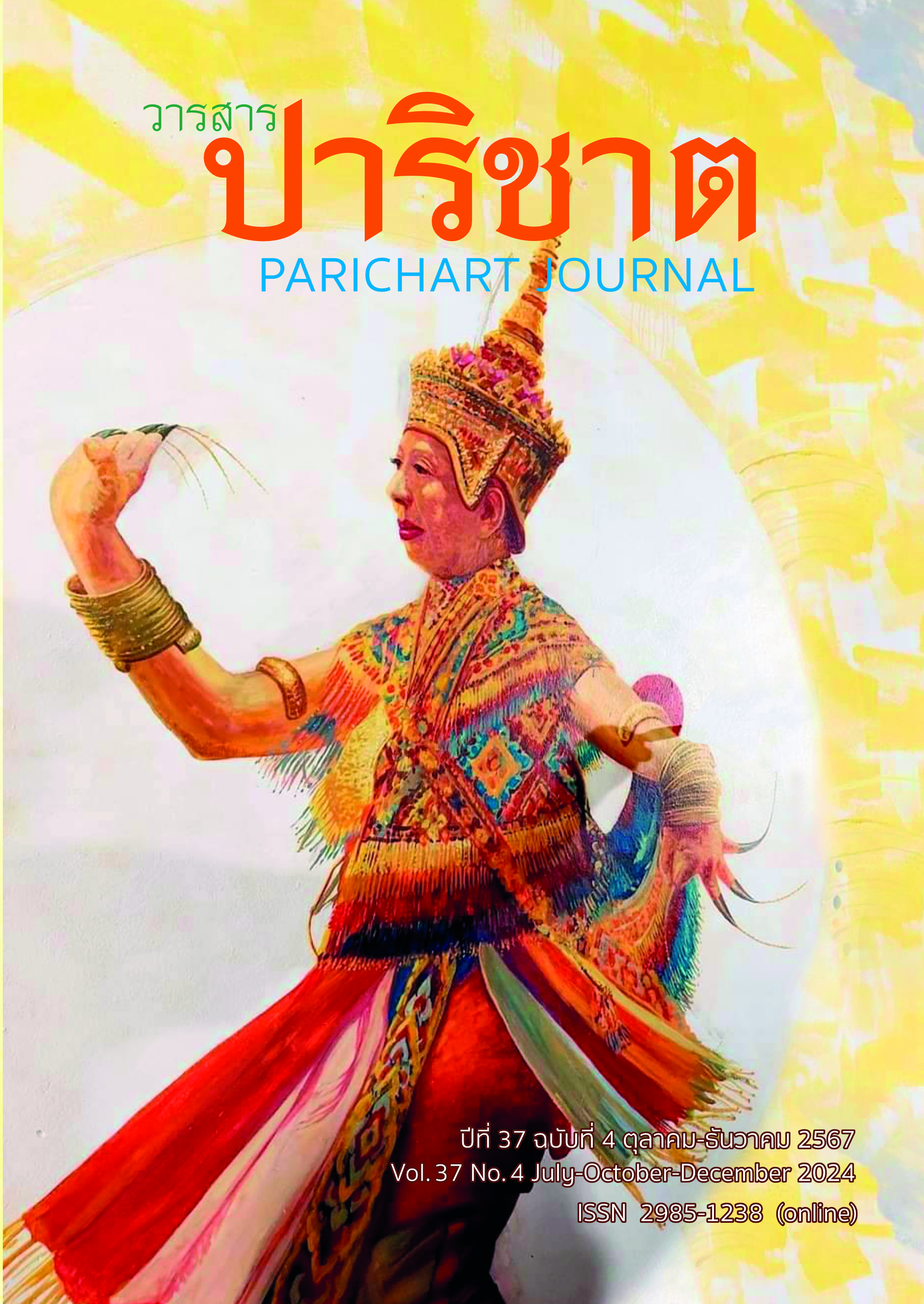Coexistence of Culture of Ethnic Groups in Vietnam for the Development of Thai Human Resources
Main Article Content
Abstract
This article aimed to report the coexistence culture of major ethnic groups in ASEAN society for the human resource development of Thailand. The study systematically collected data from various sources, including documents, books, research reports, and articles. The data were rigorously selected based on representativeness. The research revealed that after Vietnam’s reunification into the Socialist Republic, various ethnic groups continued to coexist in shared areas. Groups previously aligned with South Vietnam, such as the Khmer, Cham, and Tai-Tai, were subject to managed coexistence policies by the Vietnamese government. These policies mandated designated living areas and limited rights, contrasting with groups historically aligned with the Communist Party. Subsequently, government initiatives post-reunification, including the “Doi Moi” policy shift, aimed at fostering economic development and equitable coexistence. This approach aimed to equalize opportunities, particularly benefiting the Viet (Kinh) and Chinese ethnic groups, which possessed economic capital, foreign networks, and prior experience. On the other hand, the Tai-Tai, Cham, and Khmer groups faced socio-economic challenges while contributing to local development and supporting businesses at community levels. These findings provide valuable insights and lessons for Thai society and the ASEAN community. They underscore the importance of formulating inclusive policies and measures to promote equality, fairness, and sustainable coexistence among ethnic groups within and across societies.
Article Details

This work is licensed under a Creative Commons Attribution-NonCommercial-NoDerivatives 4.0 International License.
References
ASEAN Economic Community (AEC). (2004). Good effects VS bad effects on the Thai economy. https://positioningmag.com/17261.
Sriaka, S. (n.d.). ASEAN social and cultural community. https://asean.org/our-communities/asean-socio-cultural-community/
Phongsapitch, Amara. (1998). Culture religion and ethnicity: Analyzing Thai society from an anthropological perspective. (5th ed.). Chulalongkorn University Press.
Chatuworaphruek, Tawich. (2005). Borders, identity and the process of commodification: Politics and culture of ethnic groups in the context of tourism. Office of the Science Promotion Commission Research and Innovation (NRCT).
Gudykunst & Kim. (1996). The influence of cultural individualism-collectivism, self-construals, and individual values on communication styles across cultures. Human Communication Research, 22(4), 510–543.
Susuwan, P., & Kharaphan, R. (2019). Dynamics and adaptation of the Phuan ethnic group. Social Research Institute, Chiang Mai University. http://sacresearch.sac.or.th/research_pdf_pdf.php?file_id=3028&ob_id=240
ASEAN Watch. (n.d.). Khmer Krom protest demands Vietnam accept its history. http://aseanwatch.org/2014/07/22/
Wikipedia. Encyclopedia. (2021, November). Overseas China. https://th.wikipedia.org/wiki/จีนโพ้นทะเล
Phạm Đức Dương, (Siriwong Hongsawan translation). (2010). Vietnamese Culture: The Culture of Ethnic Diversity), the Mekong River Basin Journal, 6(3), 31-46
Preecharatcha, D. (n.d.). Ethnic diversity and coexistence in the ASEAN Community. http://www. polsci.tu.ac.th/.fileupload/39/58.pdf.
Penpinan, K. (2009). Man, and Socio-Cultural Diversity in the Humanities in socio-cultural diversity. Language.
Abdusshakur Bin Shafi'i Din'a (Abdul-Sukho Din'a). (2008, September 23). Cultural Management: Cultural Diversity in Southeast Asia. https://prachatai.com/journal/2008/09/18269
Plainoi, N., & Somsri, S. (Editor). (2010). Preamble on Thai education including articles on Thai education. P.A. Living Company Limited.
Srichampa, S. (2015). The science and art of living together. Thai Health Promotion Foundation (Thai Health) and Research Institute for Asian Languages and Cultures, Mahidol University.
Chananchida, S. (n.d.). The role of the Tai tribe in Vietnam in the Dien Bien Phu battle (1946-1954). http://thesis.swu.ac.th/swuthesis/His(M.A.)/Chananchida_S.pdf
Office of the Promotion of Arts and Culture and Creative Lanna. (n.d.). Tai settlements in Vietnam (Khao Tai, Black Tai, Tai Daeng). article detail/
Wikipedia, (2024, September 2). Overseas China. https://en.wikipedia.org/wiki/Overseas_Chinese
Wikipedia. (2024, September 2). Hoa people. https://en.wikipedia.org/wiki/Hoa_people
Songsiri, W. (2015, November 27). Cham people of central Vietnam. https://lek-prapai.org/home/slide.php?id=6
Chandra, K. (2014). Invented Traditions and Collective Memory as the Key to National Identity: The Case Study of Kampuchea Krom (Southern Vietnam). https://www.researchgate.net/publication/262011691_Invented_Traditions_and_Collective_Memory_as_the_Key_to_National_Identity_the_Case_Study_of_Kampuchea_Krom_Southern_Vietnam#full-text
ASEAN Watch. (2014). Khmer Krom's protest demands that Vietnam accept its history. http://aseanwatch.org/%202014/07/22/
VOV World. (n.d.). The colorful culture of 54 Vietnamese tribes. http://vovworld.vn./th-TH
VOV World. (2021). VOV radio and website: Foreign broadcasting section VOV 5 Vietnamese radio stations.
Leifer, M. (2005). A dictionary of modern politics in Southeast Asia. Thammasat University Press.
Ministry of Foreign Affairs (n.d.). Universal Declaration of Human Rights. https://humanrights.mfa.go.th/upload/pdf/udhr-th-en.pdf
Jitlaoarporn, C. (2017). Policy for the development of a market-based economic system. Vietnam's socialist approach. Periscope Political Science Journal Kasetsart University, 4(1), 43-66.


